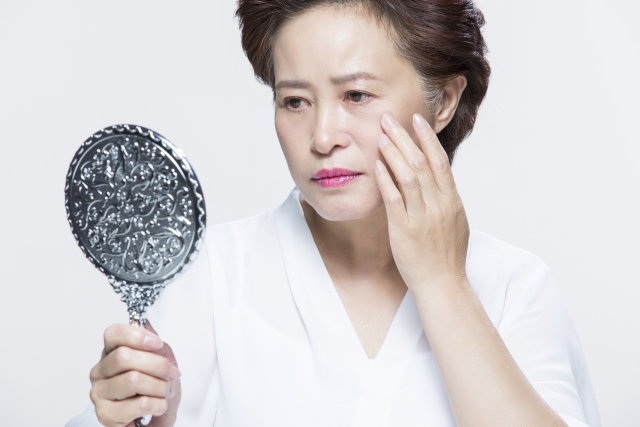저도 이런적 있었는데ᆢ 다행히 좋아졌네요
'Trembling eyes'—is it due to magnesium deficiency? Ignoring it could lead to [health tips]
I shouldn't just think that eye twitching is caused by a magnesium deficiency...
It could be facial twitching...
If the trembling does not stop and persists for a long time, you should go to the hospital and receive proper treatment.
------------------------------------
Professor Jang Jin-woo, Neurosurgery Department, Korea University Anam Hospital
The cause and treatment of facial spasms vary depending on the patient.
Differentiation of causes through imaging and electromyography tests.
Surgery, permanent treatment effect through addressing the root cause

Facial spasms are a condition characterized by repetitive muscle movements in the face that occur involuntarily. Most cases involve hemifacial spasms, where only one side of the face experiences spasms, which can affect not only around the eyes but also the mouth and neck area. Eyelid spasms may occur around both eyes or secondary spasms may develop after facial paralysis. When the area around the eyes twitches, it is often mistaken for symptoms caused by magnesium deficiency. However, magnesium deficiency is rarely due to poor nutritional status. More commonly, twitching in part of the eyelid is caused by stress, excessive caffeine intake, fatigue, or muscle tension. In most cases, symptoms improve with rest alone. If the twitching persists for a long time and spreads to other parts of the face, it may be necessary to suspect facial spasms.
Patients experiencing facial spasms often complain of severe psychological distress and difficulties in social life. This is because their facial muscles involuntarily spasm, causing them to display unwanted facial expressions regardless of their will. This can lead to decreased self-esteem and reluctance to engage in face-to-face activities, potentially significantly disrupting daily life. Therefore, if it is determined that the spasms are not temporary eyelid twitching, it is advisable to identify the cause and seek treatment as soon as possible. Facial spasms can also occur due to side effects of medications, thyroid dysfunction, or metabolic diseases. In such cases, treating the underlying condition should be the priority. If medication side effects are the cause, consulting with the prescribing doctor to identify the offending drug and considering switching to a different medication with a different ingredient may also be an option.
Many patients experience facial paralysis caused by stimulation of the seventh cranial nerve, the facial nerve, which exits the brainstem at various sites. A common cause is the compression of part of the facial nerve during the aging process of cerebral blood vessels. In such cases, symptoms can worsen due to stress, hormones, and other factors. It can also be caused by compression from tumors or trauma. When the pressure on the facial nerve is relieved or the muscles no longer respond, the symptoms of unilateral facial paralysis disappear. In the early stages, symptoms can be managed with medications such as anticonvulsants or muscle relaxants. However, medication treatment only provides temporary relief and is not a definitive cure.
Injection therapy is a method of administering botulinum toxin, a neurotoxin commonly used for cosmetic purposes such as wrinkle reduction and jawline correction, into facial muscles. The principle is to paralyze the muscles to relieve spasms. Since signals from nerves are not completely blocked, the temporary muscle paralysis that is maintained for a period of time gradually wears off, and spasms reappear. Although individual differences exist, the effects usually last for several months, and periodic repeated injections may be necessary. Initially, the effects are sufficiently noticeable and last a long time, but as the number of treatments increases, tolerance develops, reducing the effectiveness and shortening the duration, making injection therapy not a complete cure.
Theoretically, surgery that can achieve permanent therapeutic effects is the most complete method. Surgical treatment can directly relieve nerve compression by removing or repositioning the blood vessels that compress the nerve. A representative example is microvascular decompression, which involves making a small incision behind the mastoid process behind the patient's ear and inserting a buffer between the blood vessel pressing on the nerve and the nerve itself to relieve the pressure. This allows for a fundamental treatment that directly addresses the cause of facial spasms. Nevertheless, many patients hesitate to undergo surgery due to concerns about general anesthesia and the rare occurrence of complications.
In addition, facial paralysis may occur after experiencing Bell's palsy or trauma to the face. Bell's palsy is a condition characterized by temporary paralysis of the facial muscles caused by various factors such as herpes virus infection, immune system abnormalities, inflammation, or nerve damage. It can occur when inflammation remains in the nerve after the paralysis symptoms have subsided and nerve damage has not fully recovered. In such cases, both medication and rehabilitation therapy are administered to facilitate the recovery of nerve damage.
The key to treating facial spasms is to accurately identify the cause and the affected area. A comprehensive assessment using imaging tests such as magnetic resonance imaging (MRI) and electrophysiological tests including electromyography (EMG) is necessary to precisely understand the condition of the facial nerve and to develop an appropriate treatment plan. Since the causes of facial spasms vary among patients, the most effective treatment methods also differ. Accurate diagnosis and differentiation of the cause based on a specialist’s prescription and assessment are essential to applying the optimal treatment and achieving the best results.
Source: https://www.sedaily.com/NewsView/2DBMVM6RK2/GK0101?utm_source=dable
